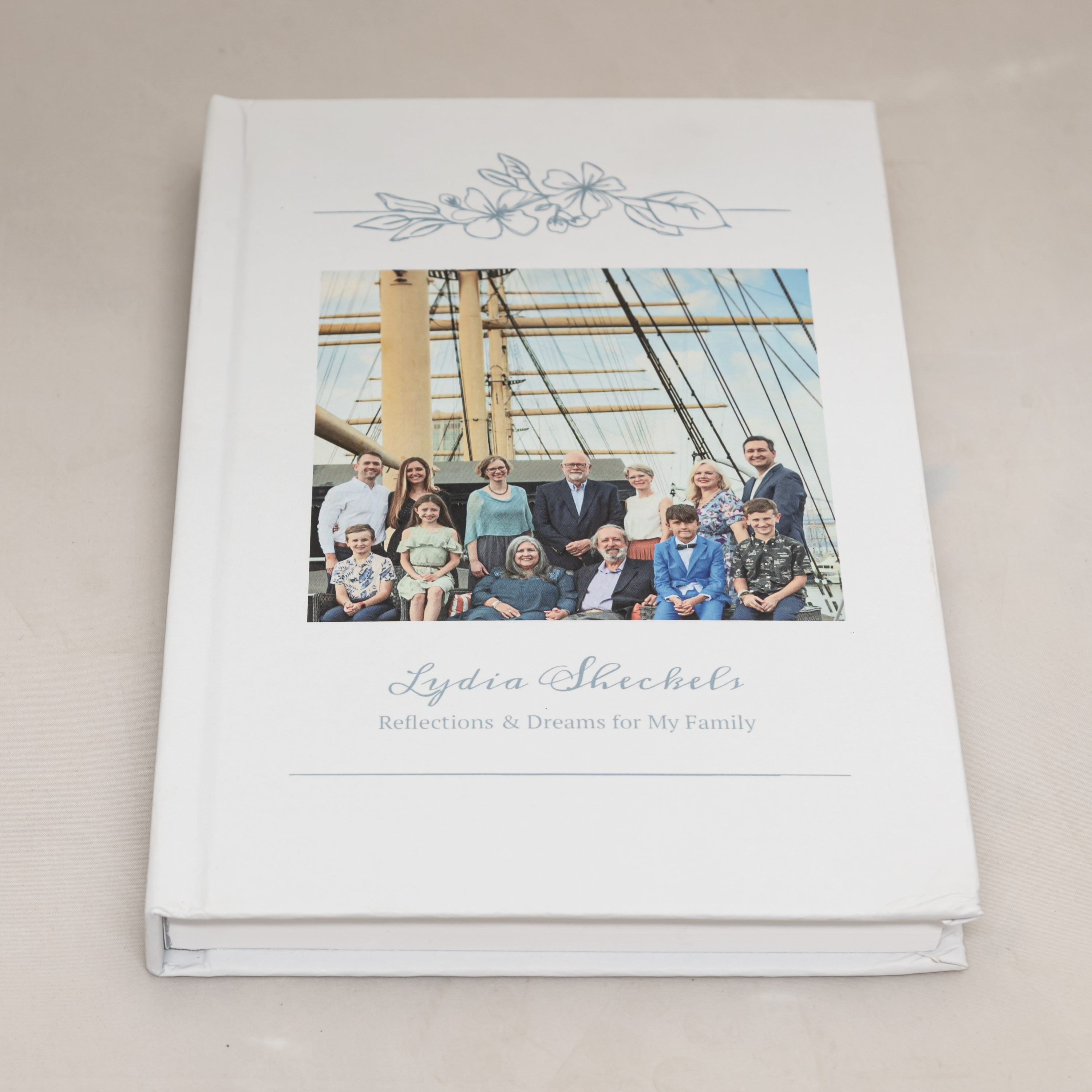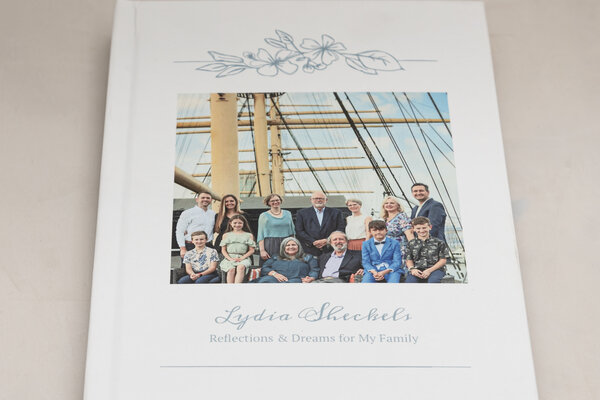PRACTICAL OBSERVATIONS
| Print this Article |
Sharing Memories for Future Generations
By Lydia Sheckels
In working with multigenerational families, we are sometimes asked to share what we know about the grandparents who funded the education account or left an inheritance. To prepare for this possibility, I documented some of these stories to share with the next generations. However, this does not replace hearing the story from the parent or grandparent themselves. This is one reason why I urge you to consider making your clients aware of options for recording their life stories.
Moreover, your clients often aren’t prepared to record their stories. During the course of my career as a financial planner, I have worked with many clients who have shared incredible stories about their businesses and families. I have often suggested that they document their history by writing a book to share with future generations. They’ve typically responded that they don’t have the time and that they don’t like to write or don’t know anyone who will transcribe their story. Either process seemed daunting, and hiring a ghostwriter could become quite expensive if you hired someone who charged by the word or by the hour. Luckily, today, there are affordable options for creating autobiographies. I discuss several of them below.
My Interest in My Grandfather Introduced Me to Oral Histories
It was late in my paternal grandfather’s life when I thought to ask him how old he was when he came to the U.S. from the Azores. All I had that day was a small notepad and a pencil, and I wrote down as much as possible. Until then, I knew nothing of his story of coming to this country alone at age 15. During the first few years, he worked on farms—first to pay his sponsor for his passage and then to save to buy the house where he raised his family. Long before Ancestry.com, I knew those notes would be important someday for my family, so I safeguarded them. I had already started to gather family photographs, but I had not realized how important it would be to know more about the people’s stories. After my first oral history experience, I regretted that I had not started earlier with my grandparents.
About a year ago, I responded to a request for volunteers to get involved in an oral history project sponsored by a local folklife center. I ask guiding questions to help the narrator tell their story, which is recorded and then transcribed before being archived for the historical record. Many of the people I have interviewed had many stories that have not been memorialized earlier. My due diligence and research skills as an advisor have been put to excellent use in preparing the questions and having the conversations.
The process has reminded me of how critical it is to document the life experiences of people in the community who have had an impact on its culture or history. The community may be a company, region, and particularly a family. This project ensures that oral histories are recorded for future generations. However, within a family, you would often need a family historian to record the oral histories and be committed to transcribing and compiling the story for the family. It’s time-consuming, so it’s not an ideal option for members of the “sandwich generation” who are splitting their time between caring for aging parents and their own children.
Options for Sharing and Documenting Life Stories
If you have a client looking to document their parent’s or own life story, or you want to document your own or a family member’s story and recollections, there are several options, depending on how self-directed you want the process to be.
For a traditional life story format, companies like No Story Lost offer packages that include a series of phone interviews that are transcribed and combined with photos provided by the client. Prices range from $1,100 to $2,200, based on the length and number of pages. When giving this as a gift, the donor can provide questions and memories that they would like to learn about. This is a good option for a narrator who is unable to type or not facile with technology.
At the do-it-yourself end of the spectrum is Storyworth, which costs $99 for a one-year subscription that can result in a book of up to 480 pages. Prompts are emailed to the storyteller weekly with a link to the website to start writing the response; the storyteller can also upload photos to become part of the story. The subscription includes a book cover in color with a black-and-white interior; for an additional fee, you can have a color interior, which is advised when including pictures. This is a great digital option for those motivated to share memories and perspectives in manageable increments. There is also an option to compile the stories of multiple narrators in one book, although this requires multiple subscriptions.
Storyworth questions can be customized, and they can also be changed by the narrator. As each response is submitted, it is shared electronically with the unlimited group of recipients that the buyer chooses. Before the book is published, the narrator can change the sequence of the questions. Important note: Unfortunately, this is not a good option for someone who has a physical disability that prevents them from typing (or an inability to dictate to a typist) or someone who has no email address or internet connection (yes, they still exist!).
There are also self-publishing options like Amazon that can be used with or without editing and other creative services provided via Amazon or other providers. This can be used for autobiographies and is a popular choice for authors who want to retain full control over their work and/or have not been able to find a traditional publisher. The cost to publish the book varies by creative and editing services used, length, content format, color and quality of paper and binding, and number of copies, etc.
My Experience with Storyworth
 It had not occurred to me that I might someday be prompted to tell my story. That changed last year, when my son and his family gave me a one-year subscription to Storyworth, which was a new concept for me. After 52 weeks, my responses were compiled in a printed book to share with my family. My son’s family chose questions that they wanted me to answer, and I also had a library of questions to select from, as well as the ability to create my own questions. I could also replace questions and skip weeks when I would be away so that I could catch up later.
It had not occurred to me that I might someday be prompted to tell my story. That changed last year, when my son and his family gave me a one-year subscription to Storyworth, which was a new concept for me. After 52 weeks, my responses were compiled in a printed book to share with my family. My son’s family chose questions that they wanted me to answer, and I also had a library of questions to select from, as well as the ability to create my own questions. I could also replace questions and skip weeks when I would be away so that I could catch up later.
I enjoyed going through my family pictures so that they could be part of the story. Uploading is easy. However, you currently lack the ability to format or wrap text around pictures. There are no choices for fonts, which could be frustrating for someone who wants a more customized book. It was perfect for me, as it was more about reflecting on pivotal moments in my life than it was about customizing the style.
As I proceeded through the process, starting with the easy questions like “What were my grandparents like?” and “What were you like as a teenager?” I came to questions that made me really reflect and recall memories of people and events that shaped my life. I found myself researching my own memories to fact-check and confirm names and places. It also encouraged me to better organize my family photos and records.
As I neared the end of the first year, some of the questions were prompting me to share my values and perspectives, and I realized that I could use this media to share other things that I want my family to know, including the provenance of family heirlooms and other possessions that have a story they should be aware of. I decided to renew my subscription for another year so that I can use it to memorialize the things that I want my family to know.
Final Thoughts
Legacies don’t only take the form of monetary inheritances. Each life is the sum of the experiences, including the challenges, that result in the wisdom earned during one’s life. The greatest legacies are less often shared with family members: who or what inspired you, what’s your advice for future generations, how was the family wealth acquired, etc. We have busy lives with too many distractions that get in the way of sharing who we are and how we were shaped by the world around us.
Documenting my stories and recollections has been a valuable experience for me, and the birthday gift enabled me to share my legacy with my loved ones. A subscription to Storyworth may be an interesting client appreciation gift or even a gift to yourself!
Lydia Sheckels is chief investment officer-emeritus and senior financial advisor for Wescott Financial Advisory Group LLC, headquartered in Philadelphia. Lydia is a past chair of the NAPFA Board of Directors and a NAPFA member since 1993.


